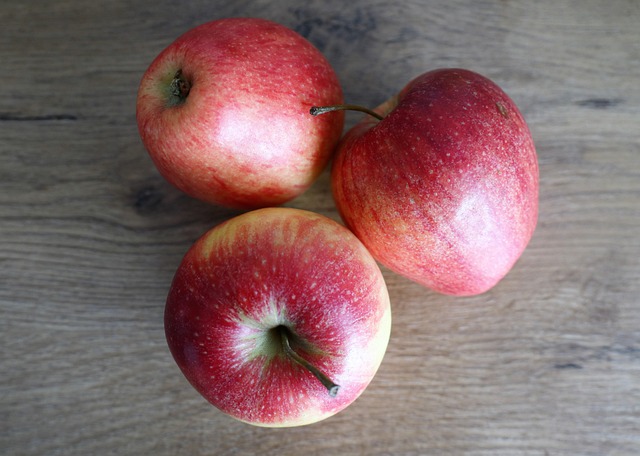In the heart of any bustling city, where neon lights flicker against the midnight sky, there is a rhythmic pulse that cannot be ignored. That pulse is the beating heart of rap, a genre that has evolved from subway stations and basement studios to global stadiums. Yet beneath its bold bravado and lyrical swagger lies a simple, yet profound element: the sample. A sample, the borrowed snippet of sound from another track, is the connective tissue that stitches together eras, genres, and cultures. It is the sonic glue that allows a new track to pay homage to its predecessors while forging something unmistakably fresh.
What Is a Sample and Why Does It Matter?
At its core, a sample is a fragment of a pre-existing recording—be it a drum loop, a vocal phrase, a melodic line, or even a single note—that is extracted and repurposed in a new musical context. For rap producers, samples are more than just sound bites; they are storytelling tools, bridges to the past, and building blocks for fresh compositions.
- Historical Resonance: Sampling allows modern artists to tap into the emotional and cultural weight of older tracks, giving listeners a sense of continuity.
- Creative Innovation: By recontextualizing familiar sounds, producers can create entirely new textures and sonic landscapes.
- Legal and Ethical Considerations: The art of sampling has prompted a complex legal framework, pushing artists to negotiate rights, clearances, and royalties.
Sampling in Rap: A Timeline
The lineage of rap sampling can be traced back to the very origins of hip‑hop in the 1970s, when DJs at parties would loop the breakbeats of funk and soul records to keep the crowd dancing. Over the decades, sampling has transitioned from a rebellious act of creativity to a polished craft embraced by mainstream producers.
“The first beat we ever made was a simple loop from a Parliament track,” recalled a pioneering producer from the Bronx. “We didn’t think of it as copying; we thought of it as paying tribute.”
Key Genres That Provide the Sweetest Samples
While any recording can become a sample, certain genres are prized for their rich textures and rhythmic grooves. These genres not only shape the sonic palette of rap but also reflect the cultural tapestry from which rap draws its energy.
- Soul and Motown: Smooth vocal harmonies and lush arrangements create emotive foundations.
- Funk: Tight basslines and syncopated guitar riffs provide the groove that keeps heads nodding.
- Jazz: Improvisational melodies and complex chord structures offer a sophisticated backdrop.
- Disco: Driving four‑on‑the‑floor beats deliver a dance‑floor vibe that translates well into club mixes.
- Reggae and Dancehall: Off‑beat rhythms and reggae toasting add an international flavor.
Why Soul and Funk Are the Go‑To Sources
The warm, organic instrumentation of soul and funk records lends itself to seamless looping. The classic breakbeat of James Brown’s “Funky Drummer” or the horn stabs of The Meters’ “Cissy Strut” have become staples in rap production because they are both instantly recognizable and versatile. When a producer chops a section of a soulful bass line and overlays it with hard-hitting 808s, the result is a fusion that respects the original while adding a modern edge.
Sampling and the Party Culture
One of rap’s most visceral contributions to contemporary party culture is its ability to transform any venue into a pulsating, immersive experience. The process of sampling is integral to this transformation for several reasons:
- Energy Translation: By layering high‑energy samples with booming bass, producers can create an unstoppable momentum that carries the crowd.
- Memorability: Recognizable samples hook listeners instantly, making tracks stick in the minds of partygoers.
- Cross‑Generational Appeal: A familiar groove can bridge age gaps, allowing younger audiences to connect with older music while older listeners feel nostalgic.
Live DJ Sets and the Art of Sample Mixing
In a live DJ set, sampling transcends studio production. DJs sample in real time, blending tracks from different genres, manipulating key and tempo, and creating mashups that surprise and delight. This live manipulation keeps parties dynamic and underscores rap’s tradition of spontaneity and innovation.
Case Studies: How Sample‑Driven Tracks Sparked Movements
Below are a few landmark rap tracks that exemplify the power of sampling to redefine party vibes and cement cultural movements.
- “The Breaks” – Kurtis Blow (1980): One of the earliest commercially successful rap tracks, it sampled the funk track “The Breaks” by James Brown. The song’s infectious groove turned it into a dancefloor staple and helped rap gain radio play.
- “Juicy” – The Notorious B.I.G. (1994): Built around a sample from Mtume’s “Juicy Fruit,” this track used a silky, romantic groove that became synonymous with the golden age of rap, inspiring countless parties and mixtapes.
- “Yeah!” – Usher (2004): Though not a pure rap track, its sampling of “Just a Gigolo” by Louis Prima, coupled with a hip‑hop beat, created a crossover hit that redefined club culture and propelled the genre into mainstream dance.
Influence on Global Music Scenes
The global reach of rap sampling is evident in how it has inspired artists beyond the United States. In Brazil, the funk carioca scene adopted heavy sample loops from American soul tracks, creating a distinct sound that dominated Rio’s nightlife. In South Korea, K‑hip‑hop producers sample jazz and classic K‑pop, blending them with trap beats to generate chart‑topping hits. These cross‑cultural exchanges illustrate how a single sample can ignite a worldwide party culture.
Legal Landscape: Navigating the Sample Maze
While samples add depth and continuity, they also introduce legal complexities. Artists and producers must navigate clearance procedures, negotiate royalties, and often pay substantial licensing fees to use a sample. Failure to do so can lead to lawsuits and costly settlements, as famously seen in cases like the lawsuit over the song “Blurred Lines.”
Despite these challenges, many creators choose to clear samples because the artistic value outweighs the financial cost. Moreover, some producers opt for the use of royalty‑free sample libraries, a compromise that ensures creative freedom without legal risk.
Sample Libraries and the Democratization of Production
Digital audio workstations (DAWs) now come bundled with vast sample libraries, and independent producers can purchase high‑quality, cleared samples at a fraction of the cost of traditional licensing. This accessibility has lowered entry barriers, enabling more artists from diverse backgrounds to participate in the rap ecosystem and contribute fresh sounds to party culture.
Future Trends: Sampling Meets Technology
As technology evolves, sampling is no longer limited to physical vinyl or analog tape. Artificial intelligence, machine learning, and deep learning models are beginning to generate realistic samples or modify existing ones to produce new sounds. AI‑driven tools can extract specific instrument tracks from complex mixes, giving producers unprecedented control over the sample manipulation process.
In the future, the line between original composition and sampled material may blur further. Artists could create hybrid tracks where AI-generated loops serve as the base, which are then layered with human-made vocals and instrumentation. The resulting music will still carry the emotional resonance of a sample while offering a novel sonic experience for listeners and partygoers alike.
Community‑Generated Samples and the Rise of Remix Culture
Online platforms for sharing and remixing music—such as SoundCloud, Bandcamp, and various forums—allow producers to share their own samples openly. This encourages a vibrant remix culture, where fans and aspiring producers remix tracks for parties, festivals, and personal enjoyment. This communal approach to sampling democratizes the music‑making process and keeps party culture continuously evolving.
Conclusion: The Ever‑Evolving Beat of Sampling
Sampling is more than a production technique; it is a cultural conversation spanning decades and continents. It connects the soulful grooves of the 1970s to the digital beats of today, fueling the energy that keeps parties alive. Whether it’s a basement in Queens, a nightclub in Lagos, or a rooftop in Los Angeles, the simple act of taking a familiar sound and reshaping it into something new unites people under a shared rhythm.
As rap continues to grow, the role of the sample remains central. It preserves the legacy of musical pioneers, provides a canvas for creative expression, and ensures that every beat—whether old or new—continues to ignite the party spirit across the globe.



